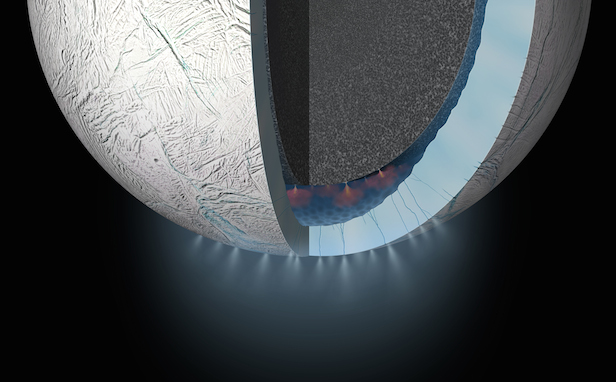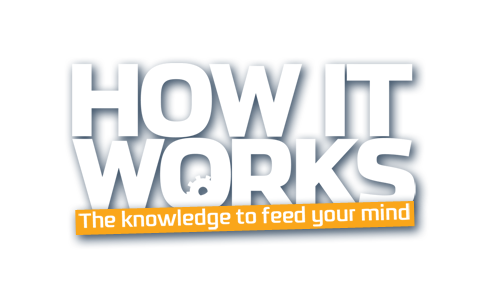Possible habitable region discovered within Saturn moon
Scientists have discovered hydrogen gas in the plume of material erupting from Enceladus

During Cassini’s deepest dive through the Enceladus plume, SwRI scientists discovered hydrogen gas in the material erupting from the Saturnian moon. Image credit: NASA/JPL-Caltech
Scientists from Southwest Research Institute (SwRI) have discovered hydrogen gas in the plume of material erupting from Saturn’s moon Enceladus. Analysis of data from NASA’s Cassini spacecraft indicates that the hydrogen is likely produced through chemical reactions between the moon’s rocky core and warm water from its subsurface ocean. The SwRI-led team’s discovery suggests that Enceladus’ ocean floor could include features analogous to hydrothermal vents on Earth, which are known to support life on the seafloor.
“Hydrogen is a source of chemical energy for microbes that live in the Earth’s oceans near hydrothermal vents,” says SwRI’s Dr. Hunter Waite, principal investigator of Cassini’s Ion Neutral Mass Spectrometer (INMS). “Our results indicate the same chemical energy source is present in the ocean of Enceladus. We have not found evidence of the presence of microbial life in the ocean of Enceladus, but the discovery of hydrogen gas and the evidence for ongoing hydrothermal activity offer a tantalising suggestion that habitable conditions could exist beneath the moon’s icy crust.”
On the Earth’s ocean floor, hydrothermal vents emit hot, mineral-laden fluid, allowing unique ecosystems teeming with unusual creatures to thrive. Microbes that convert mineral-laden fluid into metabolic energy make these ecosystems possible.
“The amount of molecular hydrogen we detected is high enough to support microbes similar to those that live near hydrothermal vents on Earth,” says SwRI’s Dr. Christopher Glein, a pioneer of extraterrestrial chemical oceanography. “If similar organisms are present in Enceladus, they could ‘burn’ the hydrogen to obtain energy for chemosynthesis, which could conceivably serve as a foundation for a larger ecosystem.”
During Cassini’s close flyby of Enceladus on 28 October 2015, INMS detected molecular hydrogen as the spacecraft flew through the plume of gas and ice grains spewing from cracks on the surface. Previous flybys provided evidence for a global subsurface ocean residing above a rocky core. Molecular hydrogen in the plumes could serve as a marker for hydrothermal processes, which could provide the chemical energy necessary to support life. To search for hydrogen specifically native to Enceladus, the spacecraft flew particularly close to the surface and operated INMS in a specific mode to minimise and quantify any spurious sources.
“We developed new operations methods for INMS for Cassini’s final flight through Enceladus’ plume,” says SwRI’s Rebecca Perryman, the INMS operations technical lead. “We conducted extensive simulations, data analyses, and laboratory tests to identify background sources of hydrogen, allowing us to quantify just how much molecular hydrogen was truly originating from Enceladus itself.”
Scientists also considered other sources of hydrogen from the moon itself, such as a preexisting reservoir in the ice shell or global ocean. Analysis determined that it was unlikely that the observed hydrogen was acquired during the formation of Enceladus or from other processes on the moon’s surface or in the interior.
“Everything indicates that the hydrogen originates in the moon’s rocky core,” Waite says. “We considered various ways hydrogen could leach from the rock and found that the most plausible source is ongoing hydrothermal reactions of rock containing reduced minerals and organic materials.”
Keep up to date with the latest space news in All About Space – available every month for just £4.99. Alternatively you can subscribe here for a fraction of the price!





